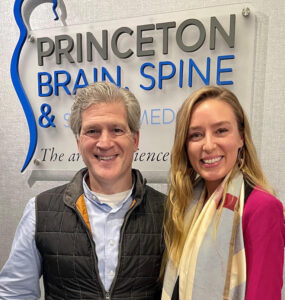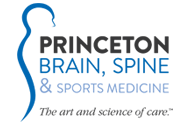From Patient to Prospective Practitioner…
How one brilliant Neurosurgeon changed the course of one patient’s destiny.
Today, Alexis LeDantec-Boswell is a young and vibrant Biological Sciences graduate who is working through the 2024 medical school application cycle with hope and eager anticipation of fulfilling her life’s mission, “servitium aliis per medicinam.*” However, Alexis’ prospects for living a full and rewarding life weren’t always so optimistic. Beginning in early childhood, Alexis was hounded by the intractable pain of Chiari-I Malformation, a congenital neurological condition in which the tonsils of the Cerebellum herniate out of their normal place within the confines of the cranium, into the spinal column. As a child, Alexis rarely slept, although lying in a prone position did alleviate the excruciating intracranial pressure that she experienced on a daily basis. At the time, doctors were unaware of this rare medical condition, and her condition remained undiagnosed until she was 17 years old, when a skilled Radiologist first pronounced this daunting diagnosis.
However, even after a diagnosis had been confirmed, Alexis and her mother spent years in search of knowledgeable practitioners, and a viable treatment plan, to no avail. For almost eight years, the only options available to alleviate Alexis’ pain was an intensive pharmaceutical regimen that soon became disabling.
That’s when an intensive investigation led Alexis to the doorstep of the Princeton Brain & Spine Institute and into the offices of Dr. Mark McLaughlin, a seasoned neurosurgeon whose knowledge, insights and patient-centric focus immediately put Alexis to ease. Dr. McLaughlin had helped a number of similarly situated patients overcome the challenge of Chiari-I Malformation, and Alexis left her initial consultation with renewed hope and the exhilaration that comes with the discovery of the viable solution that Dr. McLaughlin had outlined for Alexis. Under his care, Alexis would undergo a Posterior Fossa Decompression, which consisted simply of “making room” so that the Cerebellar tonsils could reposition themselves into their proper place within the confines of the cranium wall. Dr. McLaughlin had shined a light for Alexis, illuminating the end of the “Chiari Tunnel” of despair, and she intended to seize that lifeline for all it was worth.
The morning of April 30th, 2015 dawned bright with hope for Alexis as she awaited the arrival of Dr. McLaughlin and his NEUROTeam. Hours later when her mother arrived to the postoperative area, instead of seeing the typical groggy face of a post-surgical patient, she was taken aback to find her daughter chatting animatedly with the recovery room staff. When Alexis saw her mother, she stated, “Mom…the pain is gone.” On hearing this news, Alexis’ mother was brought to tears; 25 years of daily struggle were finally a thing of the past.

